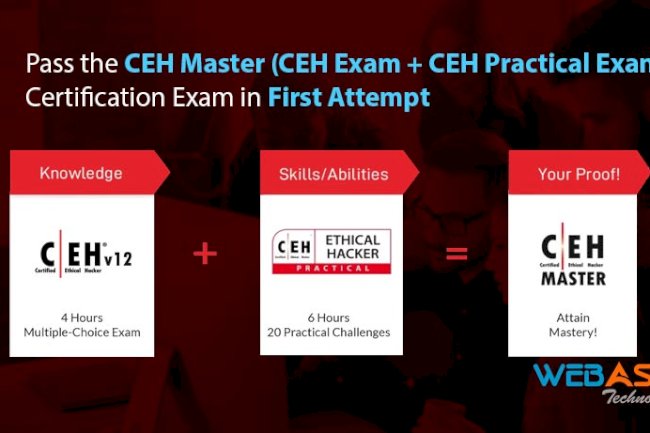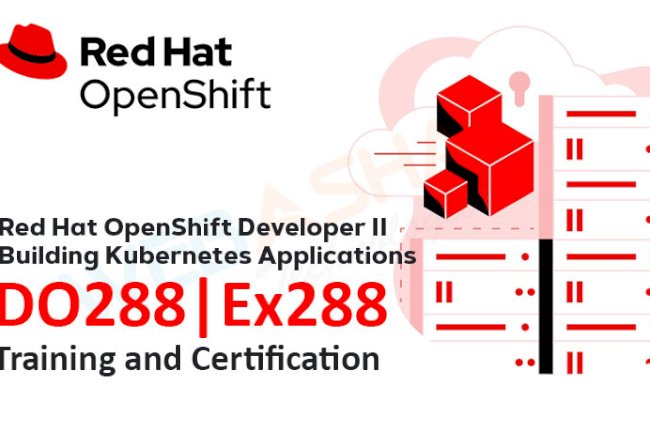Important Tips to Clear Red Hat OpenShift Ex188 | Ex288 | Ex280 and Ex380 Exam in First Attempt
Clearing the Red Hat OpenShift certification exams in the first attempt requires effective preparation strategies and hard work. Learn the important tips and strategies to pass the Red Hat OpenShift Ex188, Ex288, Ex280, and Ex380 exams on the first attempt.

Red Hat OpenShift is a popular container application platform used by many organizations worldwide. The platform provides a robust and scalable infrastructure for deploying and managing containerized applications in a Kubernetes environment. The Red Hat OpenShift certification exams, Ex188, Ex288, Ex280, and Ex380, validate an individual's skills in deploying, managing, and troubleshooting OpenShift clusters.
Clearing these exams in the first attempt requires dedication, hard work, and effective preparation strategies. In this article, we will discuss important tips that can help you clear the Red Hat OpenShift certification exams in the first attempt.
1. Understand the Exam Format and Syllabus
Before starting your exam preparation, it is crucial to understand the exam format and syllabus. The Red Hat OpenShift certification exams are performance-based, which means that you will be tested on your ability to perform tasks on a live environment. You will be given a set of tasks that you need to perform within a given time frame.
The exam syllabus covers a wide range of topics related to OpenShift, including installation and configuration, application deployment, scaling and load balancing, troubleshooting, and security. It is essential to have a clear understanding of the exam objectives and syllabus before starting your preparation.
2. Study Official Courseware and Practice Tests
Red Hat provides official courseware and practice tests that can help you prepare for the certification exams. The courseware covers all the topics included in the exam syllabus and provides in-depth knowledge of OpenShift architecture and components.
The practice tests simulate the actual exam environment and help you get familiar with the exam format and types of questions. By studying the official courseware and taking practice tests, you can identify your weak areas and focus on improving them.
3. Join a Red Hat OpenShift Exam Preparation Course
Joining a Red Hat OpenShift exam preparation course can be highly beneficial when preparing for the certification exams. These courses provide hands-on training on real-world scenarios and help you develop the necessary skills to deploy and manage OpenShift clusters.
The courses are conducted by certified instructors who have extensive experience in deploying and managing OpenShift clusters. By joining a preparation course, you can interact with other learners, ask questions, and get feedback on your performance.
4. Practice on Real-World Scenarios
Practicing on real-world scenarios is essential when preparing for the Red Hat OpenShift certification exams. It is recommended to set up a lab environment and practice deploying, managing, and troubleshooting OpenShift clusters.
You can practice on real-world scenarios by deploying applications, scaling and load balancing, setting up security policies, and troubleshooting issues. By practicing on real-world scenarios, you can develop the necessary skills and gain confidence in your abilities.
5. Manage Your Time Effectively
Time management is crucial when taking the Red Hat OpenShift certification exams. You will be given a limited amount of time to perform tasks, and it is important to manage your time effectively to complete all the tasks within the given time frame.
It is recommended to read the exam tasks carefully and prioritize the tasks based on their complexity and importance. You can also use time management techniques such as the Pomodoro technique to manage your time effectively.
6. Focus on Weak Areas
Identifying and focusing on your weak areas is essential when preparing for the Red Hat OpenShift certification exams. By focusing on your weak areas, you can improve your knowledge and skills in those areas and increase your chances of success in the exam.
It is recommended to take practice tests and evaluate your performance to identify your weak areas. You can then focus on improving your knowledge and skills in those areas by studying the official courseware, practicing on real-world scenarios, and seeking help from a certified instructor.
7. Use the Command-Line Interface (CLI) for Practice
The Red Hat OpenShift certification exams require you to perform tasks on a live environment using the command-line interface (CLI). It is essential to have a good understanding of the CLI and be comfortable using it for performing tasks.
By using the CLI for practice, you can get familiar with the commands and syntax used in OpenShift and develop the necessary skills to perform tasks quickly and efficiently. You can also use the CLI to automate tasks and save time during the exam.
8. Take Care of Your Health and Well-Being
Taking care of your health and well-being is crucial when preparing for the Red Hat OpenShift certification exams. The exams can be challenging and require a lot of focus and concentration, which can be exhausting.
It is recommended to take breaks between study sessions, exercise regularly, eat healthy food, and get enough sleep. By taking care of your health and well-being, you can maintain your energy levels and stay focused during the exam.
In conclusion, clearing the Red Hat OpenShift certification exams in the first attempt requires effective preparation strategies and hard work. By understanding the exam format and syllabus, studying official courseware and practice tests, joining a preparation course, practicing on real-world scenarios, managing time effectively, focusing on weak areas, using the CLI for practice, and taking care of your health and well-being, you can increase your chances of success in the exam.














![Top 10 Ethical Hackers in the World [2025]](https://www.webasha.com/blog/uploads/images/202408/image_100x75_66c2f983c207b.webp)








